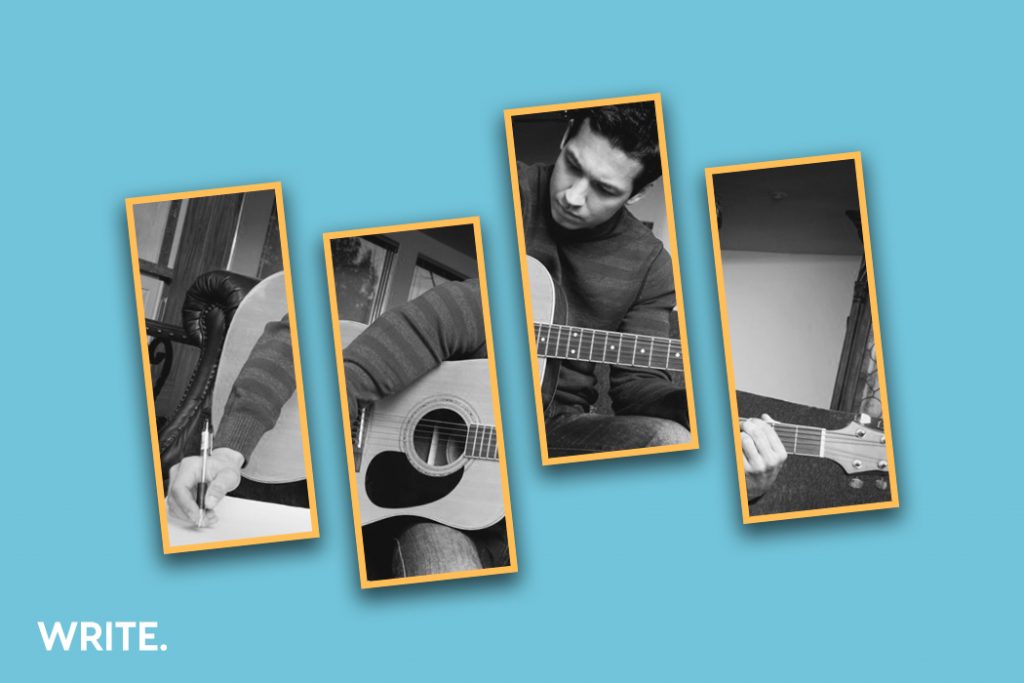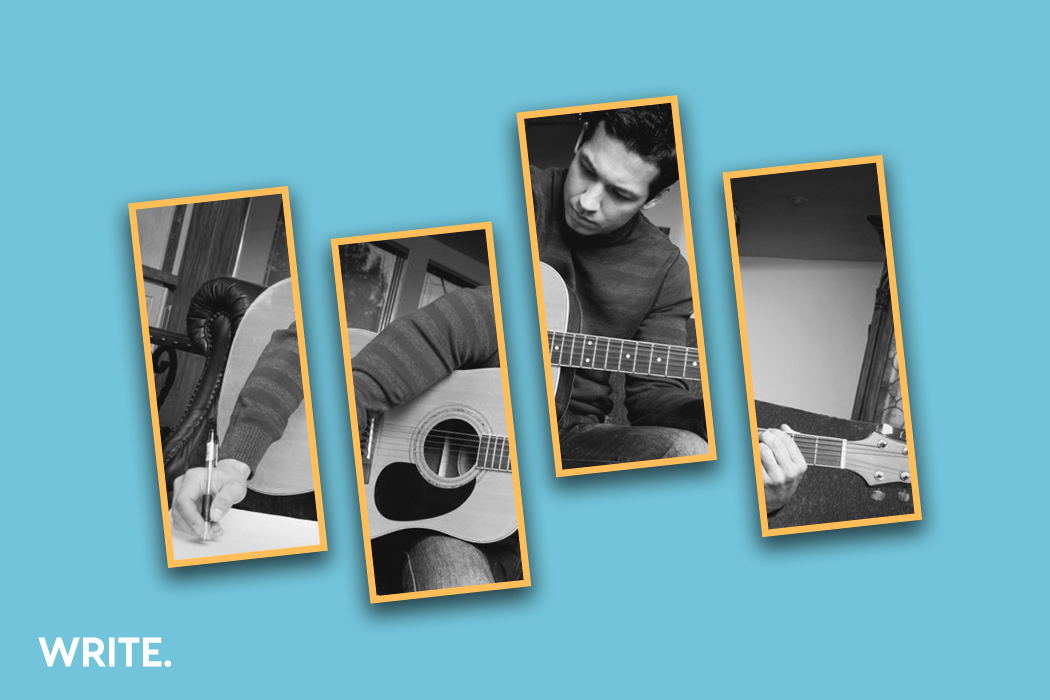+ Improve your songwriting with Soundfly! Explore our range of courses on emotional chord progressions, basic songwriting technique, songwriting for producers, and many more. Subscribe for unlimited access here.
If ever you needed proof that there is joy in repetition, the contemporary pop music chorus is the smoking gun. The chorus gives the listener the entire point of the song summed up in a short, catchy, and totally-satisfying-to-sing piece of music that can sustain as many repeats as the listener can stomach. Recently, pop music’s detractors have pointed to the increased emphasis on, and hurried rush to the chorus as evidence that the genre is being dumbed down. But dig a little deeper and there may be more to it than meets the ear.
The word “chorus” comes from the Greek khorus, which literally means “sung in groups” or “sung together.” The well-loved chorus fulfills a fundamental human need for the collective familiar. And it has been argued that that repetition, an attribute found in music from all over the globe, actually cues us to listen differently and less linearly; repeated sequences trigger parts of our brain that engage us actively.
So, as far as your body is concerned, you’re actually doing, not just perceiving, something when you listen to music, and the aspect of familiarity that comes from the chorus continually fulfilling our expectations is deeply pleasurable!
In her book, On Repeat: How Music Plays the Mind, cognitive scientist Elizabeth Hellmuth Margulis writes:
“Music takes place in time, but repetition beguilingly makes it knowable in the way of something outside of time. It enables us to ‘look’ at a passage as a whole, even while it’s progressing moment by moment. But this changed perspective brought by repetition doesn’t feel like holding a score and looking at a passage’s notation as it progresses. Rather, it feels like a different way of inhabiting a passage — a different kind of orientation.”
It’s repetition of the single musical idea in a great chorus that helps to hook us in. The addition of language helps to connect the parts of the brain that deal with speech processing, context, and meaning, with the parts that process mood and emotions, as well as motor skills.
+ Learn songwriting, theory, arranging, mixing, production, composition, and more — whenever you want and wherever you are. Subscribe for unlimited access!
Developing Your Chorus
Of course, not all choruses are cut from the same cloth. The way a chorus is developed has to do with the context that has been built around it — what’s before, what’s after, and how the song is structured.
The chorus as a “song section” in its own right is a reasonably recent phenomenon, having emerged from the refrain — a single line usually tagged onto the end of a verse, which is then repeated throughout the song. Bob Dylan uses one in the seven-verse “Tangled Up in Blue”, as does Paul Simon in “America.”
When writing with an A-A-A song structure, which is just a bunch of verses stacked onto each other, it helps to use a tagline-style refrain at the end of each verse. As a section distinct from the verses, however, choruses tend to be shorter in length than verses (with extreme disparities displayed in hip-hop), and melodically, they tend to feature higher pitches than preceding verses.
This is perhaps due to two theoretical cognitive phenomena: one, that a lift in pitch will more readily signify a lift in energy and excitement, so songwriters will build anticipation in the verses towards an explosive and more memorable chorus; and two, that higher frequency sounds capture our attention more effectively. Think of the sounds of ambulance sirens or wailing infants.
Lyrically, choruses should almost always feature the same lyrics repeated each time they come back around. When they don’t, though, make sure the variation is significant, and offers something meaningful to the flow or messaging of the song, as opposed to doing it randomly (unless “random” is the point of the song, but even then, one could argue semantically that it’s not a chorus section at all… I digress!).
Check out Train’s “Drops of Jupiter,” which despite the multiple chorus variations, all come back to the line “did you miss me while you were looking for yourself out there,” to give the listener the sense of familiarity and resolution our brains are looking for.
Country music also loves to pull the repetition with a twist move on the third chorus like a kick in the head. Take Trisha Yearwood’s “She’s in Love with the Boy,” and note the character shift at chorus three.
Using the Title
Then there’s the title, the whole title, and nothing but the title option. It’s a winner in terms of economy of writing, and boy do you remember the title of the song you’re singing in the shower every morning; especially when it’s Prince’s divine “Nothing Compares 2 U” or the slightly-less godly Wesley Willis’ “I Whupped Batman’s Ass.” You can even sing your one line title chorus on only one note, as done by Plastic Bertrand on “Ça Plane Pour Moi.”
You could argue that these titular choruses function just like an old fashioned refrain, built from a single repeated hook line, like in Daft Punk’s “Get Lucky,” but because of the shift in melody, we hear it as an entirely new and separate section, regardless of whether the chord progression remain the same.
Lastly, the icing on the cake of a great chorus is to use melody along with the flow of the syllables in the word(s) to create contours that stand out from the rest of the song, and hopefully everything else out there in song world. You can try going for something simple and emotive, as in Alex Lloyd’s “Amazing;” or perhaps something exclamatory, like the “Whoa” of “Livin’ on a Prayer,” and the “Hey” of “Hey, Jude.” You could use something questioning or imperative, both demanding a response from the listener, like The Clash’s “Should I Stay or Should I Go” or Blondie’s “Call Me.” All of those hooks clamour for the listener’s attention and grip it without letting go.
Let’s not forget to wave a flag for the rule-breakers, too.
Some favorites of mine that cleverly innovate on the chorus are Suzanne Vega’s “Tom’s Diner,” which has no discernible chorus at all, Coldplay’s use of a wordless chorus in “A Sky Full of Stars,” and the standard, “Moonlight in Vermont,” the refrain of which doesn’t really rhyme with anything in the song except itself when it comes back around each time.
These songwriters all know what they’re doing, and they know how to hook us in, even by alternative, non-intuitive means.
So go forth, explore, follow or break the rules, and build something memorable!
Get 1:1 coaching on your songwriting from a seasoned pro.
Soundfly’s community of mentors can help you set the right goals, pave the right path toward success, and stick to schedules and routines that you develop together, so you improve every step of the way. Tell us what you’re working on, and we’ll find the right mentor for you!






